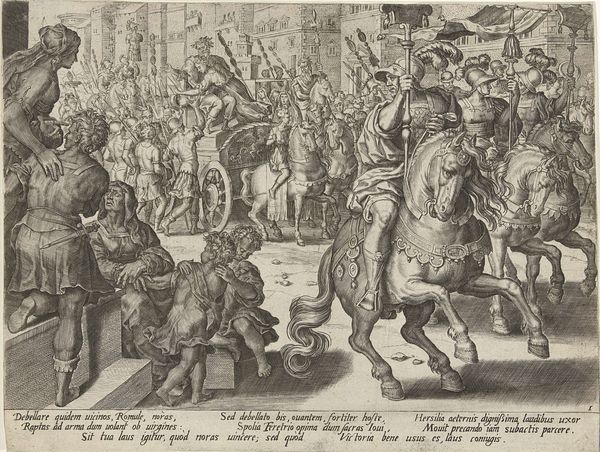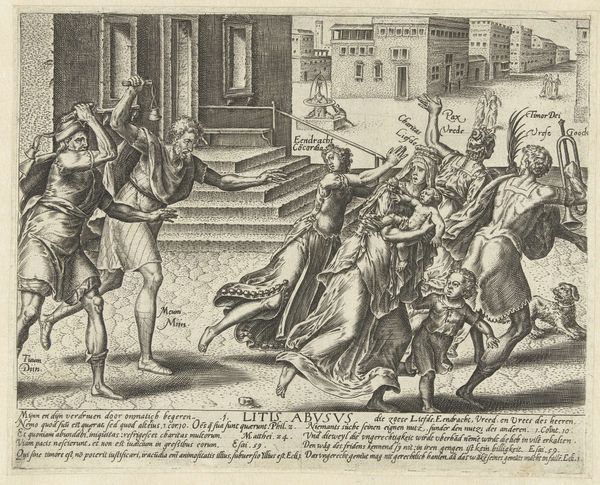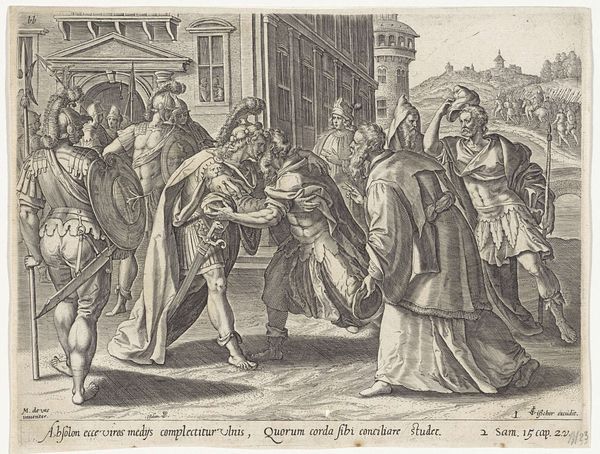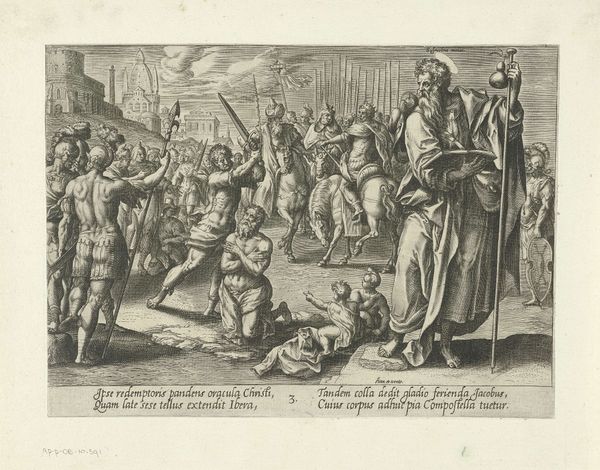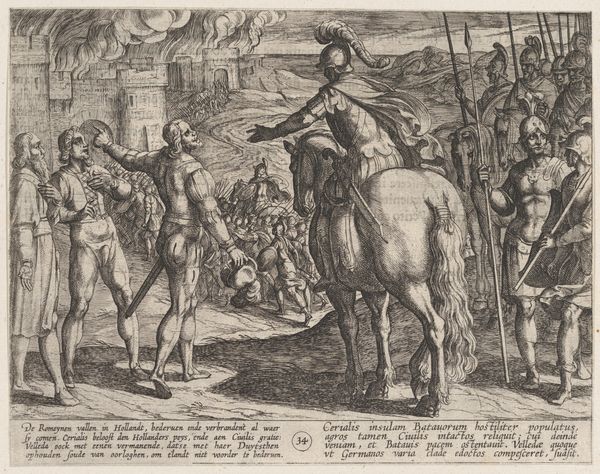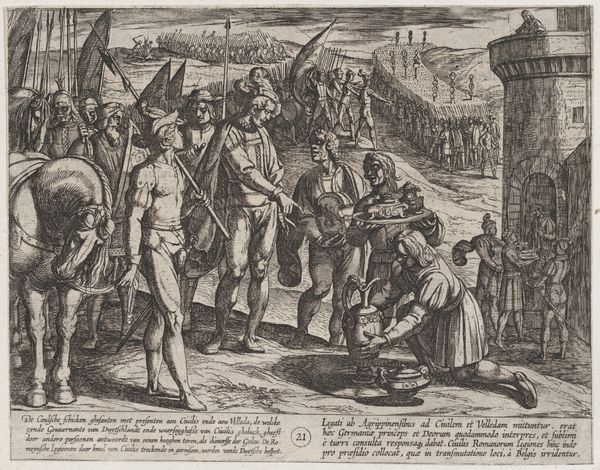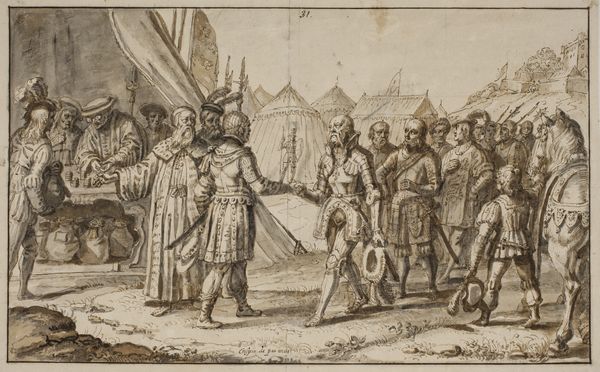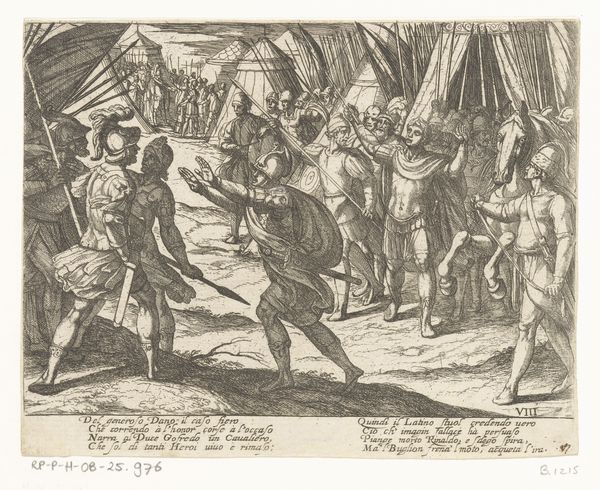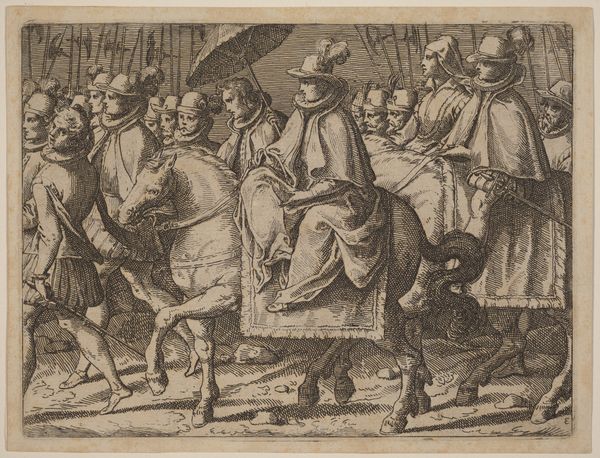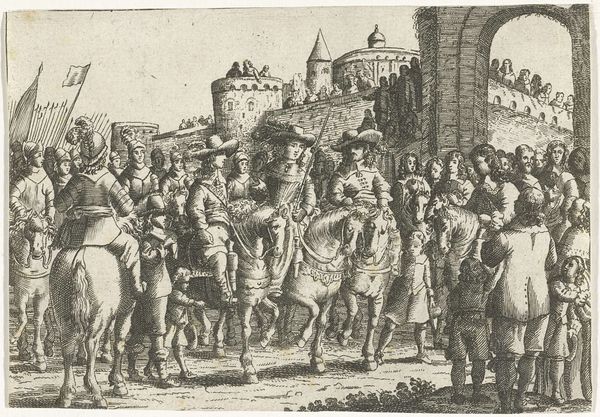![Emperor Justinian Receiving the First Imported Silkworm Eggs from Nestorian Monks, Plate 2 from "The Introduction of the Silkworm" [Vermis Sericus] by Karel van Mallery](/_next/image?url=https%3A%2F%2Fd2w8kbdekdi1gv.cloudfront.net%2FeyJidWNrZXQiOiAiYXJ0ZXJhLWltYWdlcy1idWNrZXQiLCAia2V5IjogImFydHdvcmtzL2E5MWVlZGVkLTNjNmQtNGEwNC1iNzM2LTVjMjJhNWQ3OTViMC9hOTFlZWRlZC0zYzZkLTRhMDQtYjczNi01YzIyYTVkNzk1YjBfZnVsbC5qcGciLCAiZWRpdHMiOiB7InJlc2l6ZSI6IHsid2lkdGgiOiAxOTIwLCAiaGVpZ2h0IjogMTkyMCwgImZpdCI6ICJpbnNpZGUifX19&w=3840&q=75)
Emperor Justinian Receiving the First Imported Silkworm Eggs from Nestorian Monks, Plate 2 from "The Introduction of the Silkworm" [Vermis Sericus] 1595
0:00
0:00
drawing, print, engraving
#
drawing
# print
#
dog
#
landscape
#
soldier
#
horse
#
men
#
genre-painting
#
history-painting
#
engraving
Dimensions: Sheet: 7 13/16 × 10 9/16 in. (19.9 × 26.8 cm)
Copyright: Public Domain
Curator: Before us is "Emperor Justinian Receiving the First Imported Silkworm Eggs from Nestorian Monks," an engraving crafted in 1595 by Karel van Mallery, currently held at the Metropolitan Museum. Quite detailed, isn’t it? Editor: The intricate linework definitely gives it a sense of dramatic pageantry. The way the figures are positioned—Justinian elevated, the monks presented before him—creates a compelling visual hierarchy. There’s a clear story being told here, but is it truly *history* or historical fiction? Curator: That’s a pertinent question. Remember that this piece belongs to a series titled “The Introduction of the Silkworm.” It presents a pivotal moment: Nestorian monks, acting as agents of cultural and economic exchange, are said to have smuggled silkworm eggs to Constantinople, a story representing a turning point for the Byzantine Empire. Editor: Smuggling is right! It feels like national espionage, though not explicitly conveyed here. Instead, we have very theatrical figures. Notice the play of light and shadow across their robes and armor and on the animals, heightening the dramatic tension within the piece. Curator: Precisely, observe how van Mallery utilizes engraving to convey texture. Consider the soldiers’ armor, the draping of the monks’ habits, even the musculature of the horses. It adds layers to the semiotic depth—signifiers of power, piety, and the material foundations of empire. How do you interpret the dogs? Editor: Excellent question. Their inclusion feels naturalistic and spontaneous, perhaps to humanize the scene. The figures create horizontal movement; they advance towards us and follow our view into the city streets. Also, those subtle orthogonals of buildings draw one’s focus. A touch of artificiality helps ground what would otherwise become sheer historical fantasy. Curator: Indeed, these artistic choices highlight silk not merely as commodity, but also as a symbol of innovation. This work reflects the intertwining of trade, religious diplomacy, and imperial ambition. Van Mallery renders what must have seemed an unbelievable historical event— the delivery of worms from which we obtain silk. Editor: Thinking about those monks traveling through the desert with precious eggs hidden in their staffs is quite compelling, indeed! I'm drawn into the narrative by the tension, textures, and implied narrative of such an incredible economic transfer.
Comments
No comments
Be the first to comment and join the conversation on the ultimate creative platform.

